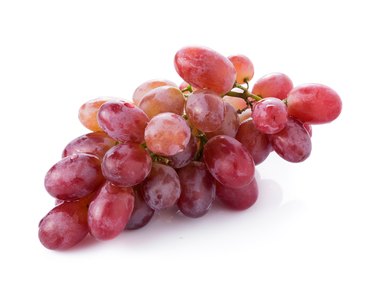
Chances are you tend to worry about the levels of toxins in the fruits you eat more than whether they contain seeds or not. In fact, you might view seedlessness in fruits as a benefit.Seeds can be hard to chew, bitter in taste or accidentally swallowed. Despite these perceived advantages, seedlessness in fruits can also have a few negative side effects.
Video of the Day
Video of the Day
Tip
Seedless fruit may be a little lower in fiber than the seedy varieties, but that doesn't mean you shouldn't include them in your diet. All fruits make a healthy addition to your daily diet — with or without seeds.
How Fruits Become Seedless
Seedless fruit is produced through a process known as parthenocarpy, which means "virgin fruit." It's the process of producing fruits without fertilization. Parthenocarpy may occur naturally as a mutation or be induced artificially.
Methods used to induce parthenocarpy include artificial pollination with altered or dead pollen or by injecting fruit with synthetic chemicals.
Nutritional Outcome of Seedlessness
Seeds in some fruits can be rich sources of nutrients such as essential oils, vitamins and minerals. For instance, grape seeds contain phytoestrogens, which can protect women against heart disease.
Seeds are also good sources of fiber, which plays several roles in your body such as suppressing appetite, stabilizing blood glucose levels and increasing bowel activity. Fruits without small seeds can't provide these benefits.
Benefits of Parthenocarpy and Seedlessness
Parthenocarpy is advantageous in conditions where pollination is poor — for instance, during freezing temperatures — which limit crop production. Also, it may be difficult for some fruits, such as summer squash and tomatoes, to pollinate or fertilize.
In some cases, seedlessness can enhance the texture and shelf life of fruits, for instance, in the case of watermelon and eggplant, according to a study published in the journal Nutrients in 2009.
Furthermore, seeds in some fruits, such as apples and apricots, can contain small amounts of toxins like cyanide. These seeds can be dangerous in large amounts or when chewed.
Negative Effects of Parthenocarpy
Sometimes fruits produced through parthenocarpy can be misshapen, smaller and duller in appearance, according to a study published in the journal Plant Physiology in 2007. Some species, such as cucumber, can also be softer in texture when produced through parthenocarpy.
Additionally, in terms of crop production, some environmentalists are concerned that producing seedless crops decreases biodiversity, which reduces plant species' resistance to disease. They also point out that transfer of genes from seedless crops may cause unmodified plants to become sterile or fail to produce seeds.
Daily Fruit Intake
The skin and pulp of fruits are also loaded with vitamins, minerals and other nutrients like essential oils and phytochemicals. Fruit skin is also a good source of fiber. So even if you're not consuming seeds, you're still getting a host of nutrients.
To boost your nutritional intake from fruits, eat many different types and try to eat 1 1/2 to 2 cups of fruit daily. It's best to consume fruits in their raw form rather than as juices.
- Encyclopaedia Britannica: Parthenocarpy
- Nutrients: Seedless Fruit Production by Hormonal Regulation of Fruit Set
- Plant Physiology: RNA Interference Silencing of Chalcone Synthase, the First Step in the Flavonoid Biosynthesis Pathway, Leads to Parthenocarpic Tomato Fruits
- Cucurbit Genetics Cooperative Report (Article 9): Fruit Firmness and Quality of Parthenocarpic Versus Nonparthenocarpic Pickling Cucumber Cultivars
- Time: Do You Really Need to Eat Five Fruits and Vegetables a Day?
- Davidson College: Advantages & Disadvantages of “Terminator Seeds”
- University of Arizona: Dietary Fiber
- Medical News Today: Benefit of Grapeseeds